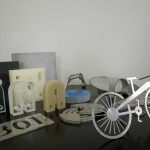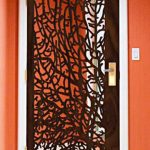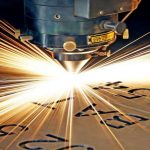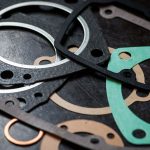Waterjets have a number of advantages over lasers.
Can work with more materials
Waterjets can machine reflective materials that lasers cannot, such as copper and aluminum. Waterjets cut a wide range of material with no changes in setup required. Also, materials which are heat-sensitive can be cut using waterjets.
No heat-affected zone (HAZ) with waterjets
Waterjet cutting does not heat your part. There is no heat-affected zone (HAZ) or thermal distortion, which can occur with lasers. Waterjets do not change the properties of the material.
Waterjets are more environmentally friendly
Abrasivejets typically use garnet as the abrasive material. Garnet is a non-reactive mineral that is biologically inert. The only issue with waterjets is when you are cutting a material that is potentially hazardous (such as lead), since small pieces of the material will be abraded and mix in with the spent garnet.
Waterjets are safer
There are no noxious fumes, such as vaporized metal, and no risk of fires. The distance between the end of the waterjet nozzle and the material is typically very small, although caution is needed when the waterjet nozzle is raised.
Uniformity of material not important
With lasers, the material needs to be relatively uniform. In particular, when cutting over uneven surfaces, the laser can lose its focus and cutting power. A waterjet will retain much of its cutting power over uneven material. Although the material may deflect the cutting stream, it typically has a negligible effect.
Better tolerances on thicker parts
Waterjets offer better tolerances on parts thicker than 0.5″ (12 mm). For thinner parts, both waterjets and lasers offer comparable tolerances.
Waterjets can machine thicker materials
How thick you can cut is a function of how long you are willing to wait. Waterjets easily handle 2″ (5 cm) steel and 3″ (7.6 cm). Although some people have used waterjets at thicknesses of up to 10″ (25 cm) in steel, it is difficult to maintain precision in materials thicker than 2″ (5 cm). Lasers seem to have a maximum practical cutting thickness of 0.5″ (12 mm) to 0.75″ (19 mm).
Better edge finish
Material cut by waterjets have a fine, sand-blasted surface because of the way the material was abraded, which makes it easier to make a high-quality weld. Material cut by laser tends to have a rougher, scaly edge, which may require additional machining operations to clean up.



